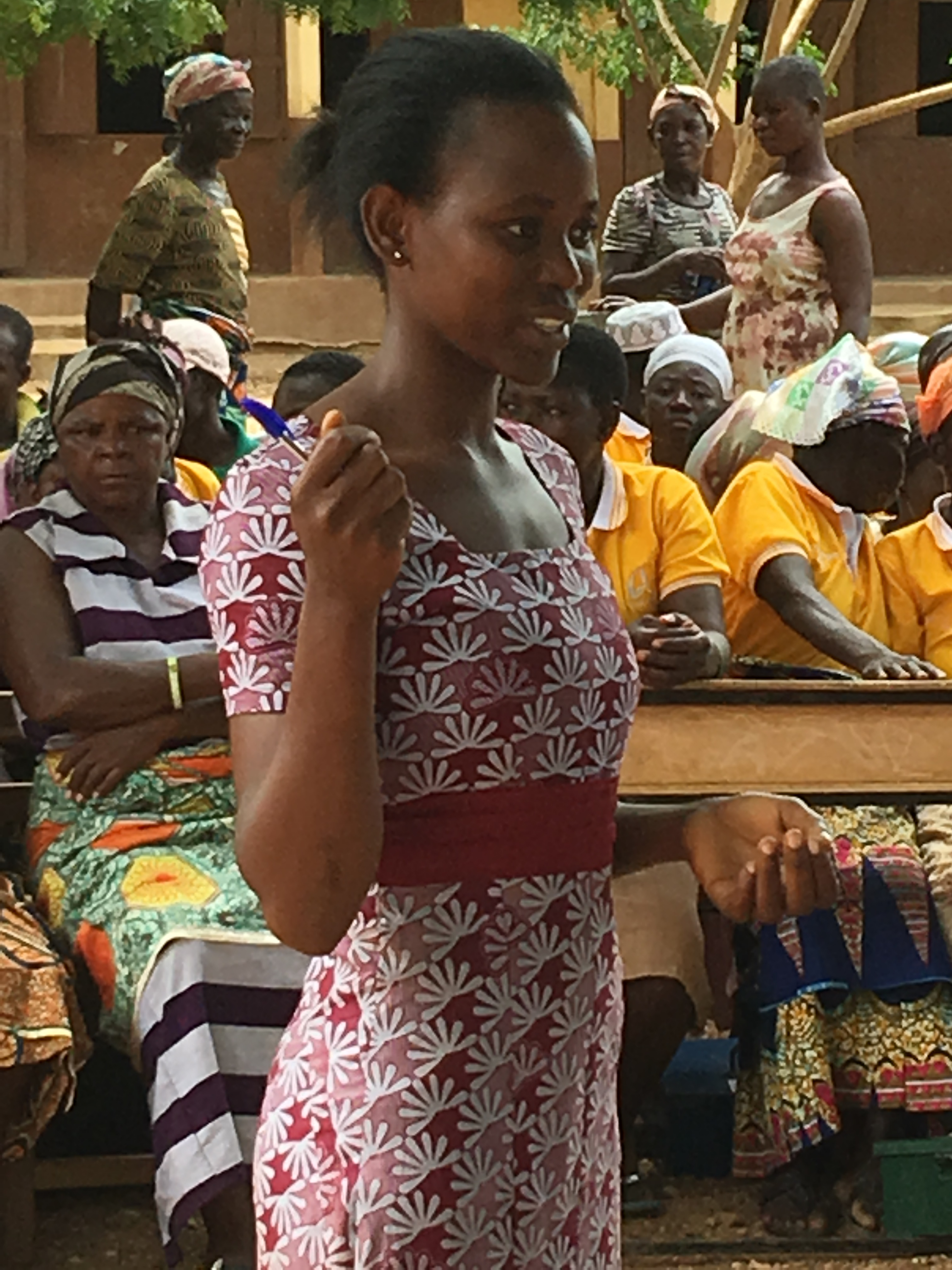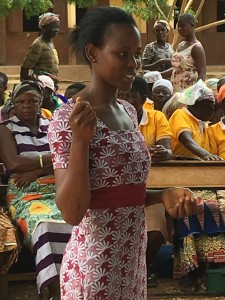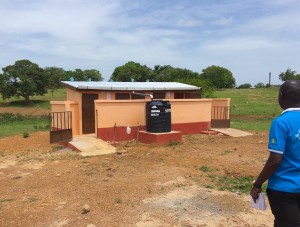First of all, I wouldn’t presume to know the answer to that question, but here is a little of what we 11 university professors working with CRS have learned so far.
We have met with and spoken to some remarkable young women who have impressed us all with their intelligence, poise, and forthrightness.
Our group’s focus during this week with CRS Ghana has been on water, sanitation, and hygiene, with one of the special interests in girls and young women. We have been visited both schools and homes to see how the Ghanaian government and CRS as its partner organization are addressing these issues in 138 schools and communities in northern Ghana.
We heard from girls that they want to attend school and receive an education. However, it is well known that girls often miss a significant amount of school days when they menstruate. UNICEF estimates that 1 in 10 girls in Africa misses some days of school during menstruation. Families may even encourage girls to drop out of school when they reach puberty. Girls told us that some boys tease them because of the periods. Schools may not have safe and clean latrines. Girls may not have clean water for hygiene. Both boys and girls may lack knowledge about what is happening to their bodies.
Therefore Ghana Education Service, Ghana Health Service, and District Water and Sanitation teams are working with CRS to implement a comprehensive program called I-SHINE to address this issue affecting young women as well as the wider context of water, sanitation, and hygiene within communities and homes.
The girls said that not only do they need health education but boys must as well. The young women in the schools we visited have formed school health clubs (as have the young men).
Access to clean water is being addressed as you can see in this picture of a water pump at a school we visited.
A clean latrine with doors, soap and water, a room for changing and cleaning, and a place to dispose of menstrual hygiene pads are all necessary. Here is a picture of such a facility we visited, with boys’ latrines on the left and girls’ on the right, with separate entrances.
One issue we have continued to discuss is the most desirable type of sanitary pads. While reusable ones are, of course, less costly, the girls said they preferred disposable ones. Our group wants to do more investigation of this issue.
Despite our limited time spent with the girls and young women, our group felt it had a good introduction to some of the key issues of water, sanitation, and hygiene in order to carry on further research, perhaps with faculty from the University for Development Studies here in Tamale.



